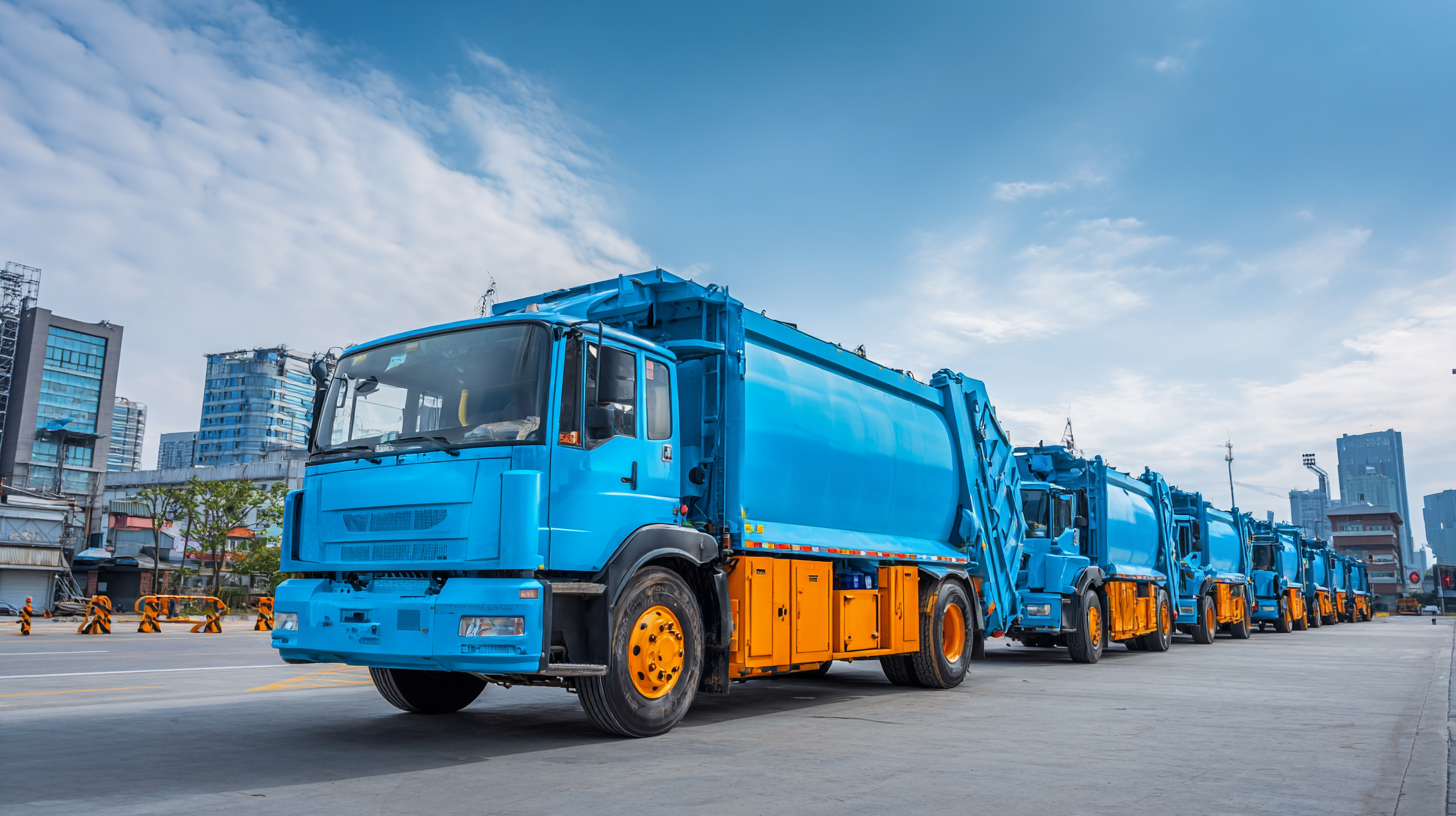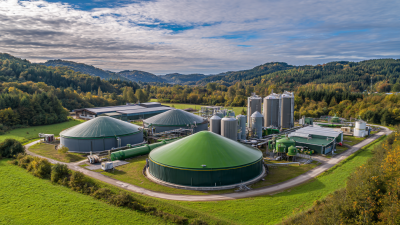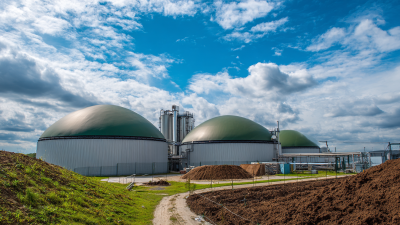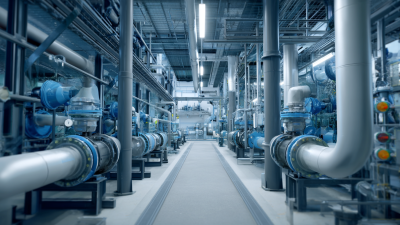The efficiency of pneumatic waste collection systems is becoming increasingly critical as cities seek sustainable solutions to manage rising waste volumes. According to industry reports, pneumatic waste collection can significantly reduce the operational costs associated with traditional waste management methods by up to 30%. This innovative approach not only enhances the cleanliness of urban environments but also contributes to improved waste sorting, minimizing landfill use and promoting recycling efforts. With the global waste generation expected to reach 3.4 billion metric tons annually by 2050, optimizing pneumatic waste collection processes is crucial for cities to maintain efficiency and sustainability.
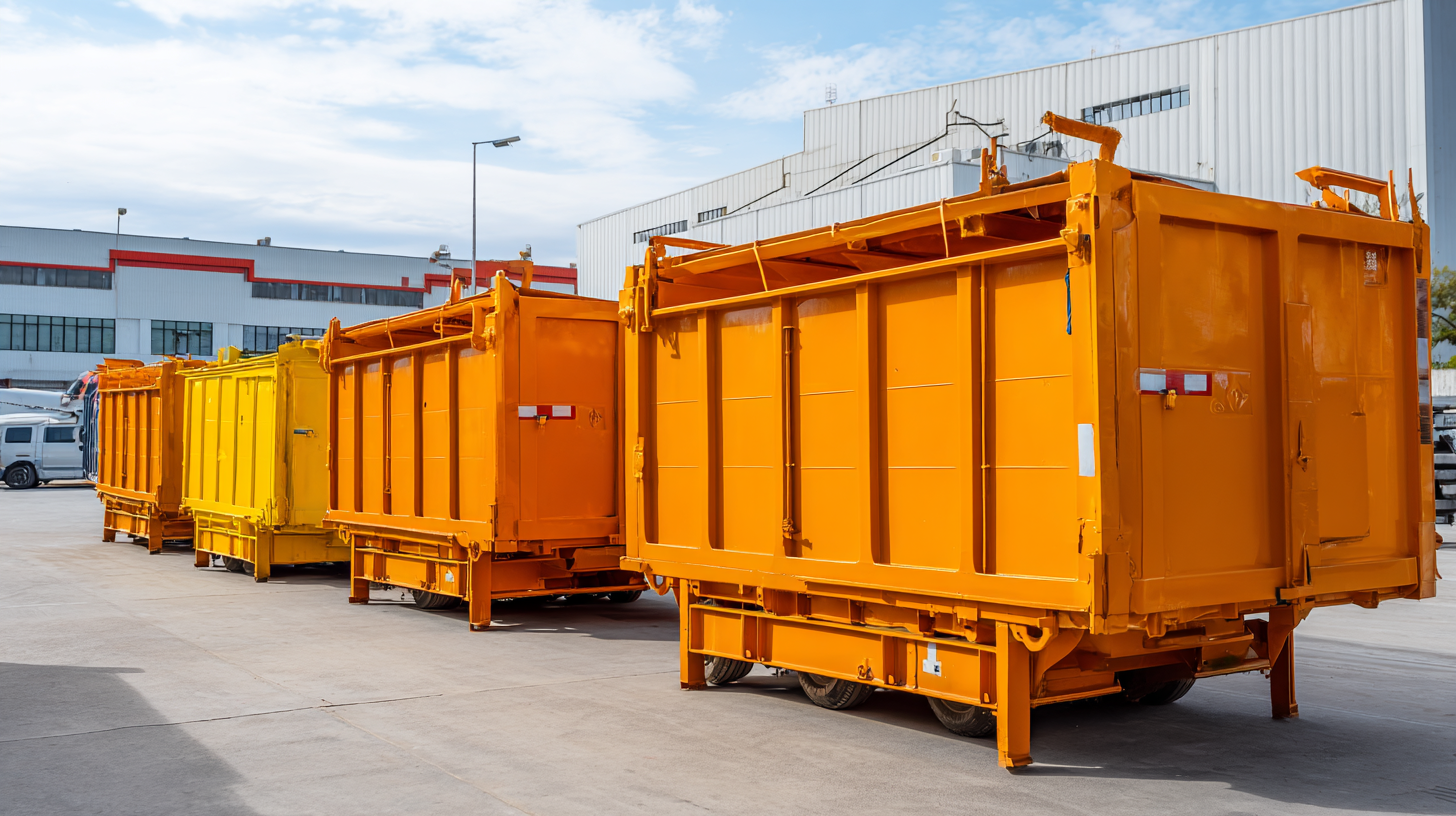
This article presents seven actionable tips for enhancing the performance of pneumatic waste collection systems, drawing on key industry statistics and best practices to drive effective solutions in urban waste management.
Maximizing waste collection productivity through advanced pneumatic systems is essential in today's fast-paced urban environments. Industry reports indicate that pneumatic waste collection systems can increase operational efficiency by up to 50% compared to traditional waste management methods. By utilizing a network of underground tubes, pneumatic systems facilitate the quick and efficient transfer of waste, reducing the reliance on manual handling and lowering labor costs.

In the modern waste management industry, leveraging data analytics for timely waste collection scheduling has become an essential practice to enhance operational efficiency. According to a report by the Environmental Protection Agency (EPA), implementing data-driven scheduling can lead to a 30% reduction in operational costs. By analyzing waste generation patterns through IoT devices and sensors, companies can predict the optimal collection times and routes, reducing the number of unnecessary pickups.
Furthermore, recent studies show that cities employing advanced data analytics techniques can improve their service coverage by up to 25%. For instance, understanding seasonal trends in waste volume allows municipalities to adjust their collection frequency accordingly, ensuring that resources are allocated more effectively. Additionally, with a projected increase in urban waste generation expected to reach 3.4 billion tons by 2050 (as reported by the World Bank), the importance of timely waste collection scheduling through data analytics cannot be overstated. Embracing these technologies not only enhances collection efficiency but also supports sustainable waste management goals, ultimately benefitting the environment and community health.
Regular maintenance protocols are crucial for optimizing the performance of pneumatic waste collection systems. Consistent upkeep not only extends the lifespan of these complex systems but also ensures that they operate at peak efficiency. For instance, routine inspections can help identify wear and tear in components such as ducts, valves, and filters, enabling timely repairs that prevent costly breakdowns. Keeping these elements in check minimizes downtime and enhances overall system reliability.
Additionally, implementing a structured maintenance schedule allows for better tracking of performance metrics and can serve as a basis for predictive maintenance strategies. By collecting data on operational efficiency, maintenance personnel can analyze trends and proactively address potential issues before they escalate. This data-driven approach helps in refining the pneumatic system's performance, leading to reduced operational costs and improved waste collection rates. In essence, regular maintenance not only optimizes pneumatic performance but also contributes to sustainable waste management practices.
| Tip | Description | Expected Efficiency Gain (%) | Frequency of Implementation |
|---|---|---|---|
| Regular Maintenance Checks | Perform scheduled inspections of pneumatic systems to identify and rectify issues. | 10-15% | Monthly |
| Employee Training | Provide training sessions to staff on proper use of pneumatic systems. | 5-10% | Quarterly |
| Leak Detection Technologies | Implement advanced technologies to detect and fix leaks promptly. | 15-20% | Biannual |
| System Upgrades | Upgrade to higher efficiency pneumatic equipment. | 20-25% | As Needed |
| Regular Data Analysis | Analyze performance data to identify patterns and areas for improvement. | 10-15% | Monthly |
| Collaboration with Suppliers | Work closely with equipment suppliers for optimal performance and maintenance strategies. | 5-10% | Annually |
| Implement Feedback Mechanisms | Establish feedback systems to continuously improve pneumatic waste collection processes. | 5-10% | Ongoing |
Effective training of staff on best practices is crucial for enhancing waste handling efficiency, particularly in pneumatic waste collection systems. With a steep increase in urban waste generation, optimizing collection processes is no longer optional. According to a recent industry report, cities that implemented comprehensive staff training saw a 20% improvement in waste sorting accuracy and a 15% reduction in collection time. Investing in employee knowledge not only enhances operational efficiency but also aligns with broader sustainability goals.
Adopting specific best practices can significantly refine waste handling processes. For instance, educating employees about the importance of proper waste categorization is essential. Waste that is correctly sorted at the source can lead to higher recovery rates. Additionally, regular training sessions that simulate real-life waste collection scenarios can prepare staff to handle challenges effectively. This hands-on approach, coupled with ongoing workshops focusing on safety and operational protocols, can further enhance team readiness and efficiency.
Furthermore, leveraging technology in staff training can augment traditional methods. Integrating digital platforms that provide real-time feedback and analytical insights can empower employees to make data-driven decisions in their roles. Optimizing pneumatic waste collection efficiency thus involves a continuous commitment to staff development, ensuring team members are well-informed and well-equipped to meet the challenges of increasing waste volumes.
This chart illustrates the key performance indicators affecting the efficiency of pneumatic waste collection systems based on industry statistics.
Utilizing smart sensors in pneumatic waste collection systems can significantly enhance efficiency by providing real-time monitoring and reporting of waste levels. These advanced sensors are equipped with the capability to detect the fill levels of waste containers, minimizing the need for manual checks. By transmitting data wirelessly, they allow waste management operators to receive instant notifications regarding storage capacity, enabling them to optimize collection schedules and routes. This proactive approach not only reduces operational costs but also ensures timely waste removal, thereby preventing overflow and environmental hazards.
Moreover, the integration of smart sensors fosters a data-driven environment where trends and patterns in waste generation can be analyzed. This information can guide waste management strategies, such as identifying peak disposal times or highlighting areas that generate excess waste. By leveraging the power of real-time data, companies can make informed decisions that enhance the overall efficiency of pneumatic waste collection systems. As municipalities and organizations increasingly prioritize sustainability, the use of smart sensors will play a crucial role in creating cleaner and more efficient waste management processes.
